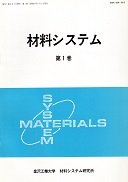Volume 5
Displaying 1-14 of 14 articles from this issue
- |<
- <
- 1
- >
- >|
-
1986 Volume 5 Pages 1
Published: 1986
Released on J-STAGE: October 06, 2021
Download PDF (310K) -
1986 Volume 5 Pages 3
Published: 1986
Released on J-STAGE: October 06, 2021
Download PDF (444K) -
1986 Volume 5 Pages 5
Published: 1986
Released on J-STAGE: October 06, 2021
Download PDF (274K) -
1986 Volume 5 Pages 7-15
Published: 1986
Released on J-STAGE: October 06, 2021
Download PDF (4275K) -
1986 Volume 5 Pages 17-26
Published: 1986
Released on J-STAGE: October 06, 2021
Download PDF (4837K) -
1986 Volume 5 Pages 27-33
Published: 1986
Released on J-STAGE: October 06, 2021
Download PDF (3411K) -
1986 Volume 5 Pages 35-42
Published: 1986
Released on J-STAGE: October 06, 2021
Download PDF (3492K) -
Photoviscoelastic Analysis of Thermal Stress by Rapid Cooling in an Epoxy Strip with a Circular Hole1986 Volume 5 Pages 43-50
Published: 1986
Released on J-STAGE: October 06, 2021
Download PDF (3171K) -
1986 Volume 5 Pages 51-57
Published: 1986
Released on J-STAGE: October 06, 2021
Download PDF (2722K) -
1986 Volume 5 Pages 59-64
Published: 1986
Released on J-STAGE: October 06, 2021
Download PDF (2229K) -
1986 Volume 5 Pages 65-68
Published: 1986
Released on J-STAGE: October 06, 2021
Download PDF (1849K) -
1986 Volume 5 Pages 69-75
Published: 1986
Released on J-STAGE: October 06, 2021
Download PDF (3559K) -
1986 Volume 5 Pages 83-
Published: 1986
Released on J-STAGE: October 06, 2021
Download PDF (1707K) -
1986 Volume 5 Pages 89-96
Published: 1986
Released on J-STAGE: October 06, 2021
Download PDF (3025K)
- |<
- <
- 1
- >
- >|
